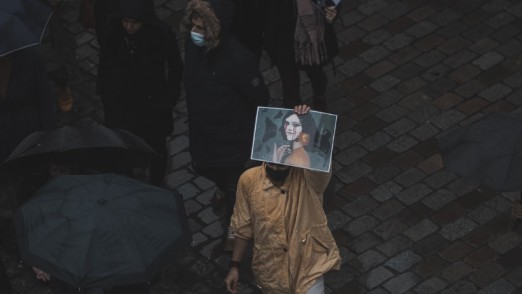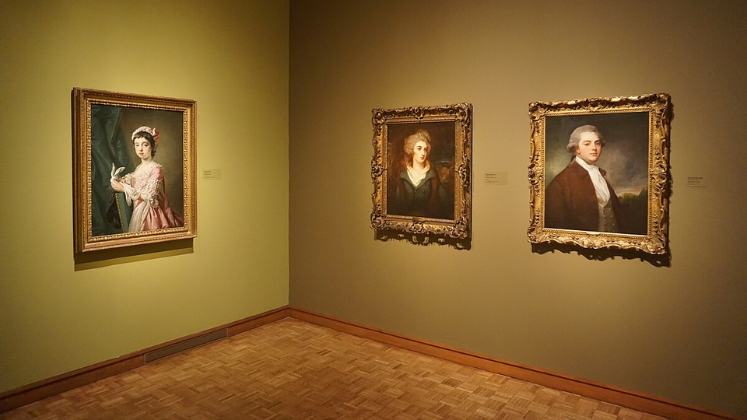Who are the Rosicrucians and what does their history reveal about the foundations of new religious movements today? Stephanos Peppas outlines some of their origins and lasting impacts.

The Rosicrucians, a “secret” community using a variety of symbols, emerged at a time of profound social, religious, and scientific upheaval in Europe, referencing many contemporary cases of new religious movements.
At the beginning of the 17th century, a series of anonymous texts known to the general public as Rosicrucian Manifestos were published. These manifestos, including “Fama Fraternitatis” (1614), “Confessio Fraternitatis” (1617) and “Chymical Wedding of Christian Rosenkreutz” (1617), laid the foundation for the Rosicrucian movement. These works introduced the concept of the “Brotherhood of the Rosicrucian Cross”, a mystical brotherhood dedicated to the pursuit of knowledge, healing, and spiritual self-development. The controversial, and historically quoted as non-existent founder of this brotherhood, Christian Rosenkreutz, symbolises his life as the journey of the seeker towards the co-called illumination, in “Fama Fraternitatis”.
A number of researchers in the mid-20th century began to write more thoroughly about “secret” communities, such as Freemasonry, the Illuminati, or the Rosicrucians. J.M. Roberts writes in his book The Mythology of the Secret Societies: “the whole subject of secret societies was neglected as an area of serious research until twenty or thirty years ago”.
In Arnold Marx’s classic 1930 research work Die Gold- und Rosenkreuzer, an accurate description of the order, its earlier movements, its history, its ritual system, and its principles is given. In 1966, Klaus Epstein, in The Genesis of German Conservatism, presents the Rosicrucians as an admittedly conservative movement: “Conservatives eventually met the [organized] effort to spread the Aufklärung through such secret societies as the Freemasons and Illuminati with a program of unmasking the radical subversion network… and with the establishment of a powerful opposing sect, the Rosicrucians”. Contemporary studies of the phenomenon have also been made by researchers and professors such as Hereward Tilton, Frances Yates, Christopher McIntosh, and Christopher Partridge.
Historic origins
The origins of the Rosicrucian movement remain a matter of debate among scholars. Some trace its roots to the German theologian and physician Johann Valentin Andreae, suggesting that he wrote the manifestos as allegorical works. Others argue that there was a secret society inspired by esoteric traditions that disseminated the texts as a means of transmitting their teachings. Regardless of their authorship, the manifestos called for the reformation of science, religion, and society.
The Fama Fraternitatis spoke of the life of Christian Rosenkreutz and his followers who had dedicated their lives to achieving a General Reformation. Their attempt was to unite the previous century’s Christian Reformation with the Natural Philosophy of Paracelsus. As von Stuckrand mentions, in the manifesto the name of one Adam Haselmeyer is given, who had been captured by the Jesuit order (d. 1540) and sentenced to iron bondage in service in the galleys. This information was secretly sent from the Order of the Cross of Rhodes by letter to all the ‘connoisseurs’ and leaders of Europe.
In the following year, 1615, the second manifesto Confessio Fraternitatis was published, which stated that the Fraternity of the Red Cross belonged to Lutheranism. Through the Confessio they also declared that they were opponents of the false alchemists who were only interested in the creation of gold far from God. However, they would remain under the secret cloak of not revealing the names of the members of the brotherhood and keeping their meeting places secret.
The life and state of Christian Rosenkreutz (who may be a mythical figure, as mentioned above) is given descriptively in this work by speaking of his travels in the Middle East through pilgrimage to the Holy Land, where he was introduced to the sciences and wisdom of the East in Arabia and Egypt. There, he gained knowledge through the Book of the World, or Liber Mundi, which was alchemically linked to the Book of Nature. Rosenkreutz became more deeply immersed in both the Hermetics teaching of the connection and relevance of the microcosm and the macrocosm, and in the Emerald Table or Tabula Smaragdina.
Basic principles of Rosicrucianism
The Rosicrucian doctrine includes mystical and philosophical elements, based on so-called esoteric knowledge combined with the alchemical knowledge forbidden in the Middle Ages. At its core, Rosicrucianism incorporates key philosophical aspects that emphasise the pursuit of spiritual enlightenment, the understanding of hidden truths within the world and man, and the integration of mysticism with a broader worldview. Central to the Rosicrucian philosophy is the concept of alchemy, symbolising the transformation of the soul and the pursuit of inner wisdom, as the renowned Carl Jung wrote in 1980. Alchemical symbolism, with its emphasis on transmutation and spiritual evolution, serves as a metaphor for the Rosicrucian’s journey toward self-realisation and union with the divine. The pursuit of spiritual enlightenment through the harmonisation of science, mysticism, and “divine wisdom” is supported by the idea of hidden, inner knowledge that, when attained, leads to a deeper understanding of the mysteries of the universe.
The principle of Hermeticism is another fundamental element of the Rosicrucian philosophy. This principle emphasises the interconnectedness of the microcosm and the macrocosm, suggesting that understanding the divine nature of the universe provides insights into its spiritual essence. Rosicrucians, influenced by hermetic thinking, engage in practices that seek to attune the individual to universal truths and cosmic harmony. Furthermore, the pursuit of knowledge, or direct experiential knowledge of the divine, is a critical aspect of Rosicrucian philosophy, emphasising a personal, transformative connection to the spiritual realm.
Rosicrucianism today
The enduring influence of the Rosicrucians can be seen in their continuing impact on Western esoteric traditions, mystical philosophies, and the wider cultural landscape. The integration of mysticism and science within the Rosicrucian tradition resonates with thinkers ranging from Isaac Newton to Carl Jung, contributing to the development of Western occultism.
In the early 17th century, the Rosicrucian movement sparked a renewed interest in mysticism, alchemy, and hermeneutics at a time of considerable religious and spiritual turmoil. The influence of the movement extended into the following centuries, with various esoteric societies and thinkers drawing inspiration from Rosicrucian ideals. In particular, the symbolism and spiritual concepts introduced by the Rosicrucians have permeated various fields, including literature, art, and the occult, contributing to the development of a rich and enduring mystical tradition.
In literature, the Rosicrucian influence is evident in works such as Johann Wolfgang von Goethe’s Faust and in the writings of William Blake, where alchemical and mystical themes echo Rosicrucian concepts.
Their impact also extends to secret societies and fraternities, such as the Hermetic Order of the Golden Dawn, which has incorporated Rosicrucian symbolism and teachings into its internal practices (Gilbert, 1996). In addition, Rosicrucianism laid the groundwork for subsequent spiritual and mystical movements, where its ideas are found in the works of 19th century occultists such as Helena Petrovna Blavatsky, co-founder of the Theosophical Society.
Modern Rosicrucian organisations, such as the Ancient Mystical Order Rosae Crucis (AMORC), continue to preserve and propagate the teachings of the Rosicrucians. The continuing influence of the Rosicrucians on Western esotericism underlines the ability of the movement to adapt and resonate in different historical and cultural contexts. In the Ancient and Proved Scottish Type of Freemasonry, known simply as the Scottish Type first applied in France, the eighteenth degree out of thirty-three in total is sometimes called Knight Rosicrucian and sometimes Prince Rosicrucian or Knight of the Eagle and the Axe (similarly used in the Grand Lodge of Greece).
The Rosicrucians, with their mysterious stirring and their esoteric teachings, are but one proof of the constant human quest for spiritual enlightenment and understanding. Coming into the light of history after an upheaval at all levels of European civilisation and the prevalence of the ‘Enlightenment’, as well as the simultaneous shaking of the Western Roman Catholic confession, the imperative of ‘General Reform’ provided fertile ground, nonetheless anti-Christian, for the spiritually restless German Lutheran founders of this secret brotherhood.
The variety of their teachings consisting of alchemical ideas about science then considered to be magic, the legend of the Philosopher’s Stone and not only, Cabalism, Hermeticism, mystical cults and witchcraft (in some cases) and combined with Illuminist ideas, again from German mind-workers, provided special answers -contradicting Christianity- and offered mystery which attracted followers. Philosophy, art, painting, literature are but a few fields of human activity in which this teaching is found.
Rooted in a synthesis of alchemy, mysticism and hermeticism, the Rosicrucian tradition continues to mis-direct seekers of “wisdom and truth” around the world. The enigmatic world of the Rosicrucians echoes a rich tapestry of ideas that have shaped the course of Western esotericism, leaving a spiritual philosophical legacy that resonates to this day.
Main image by Andrew Parodi





